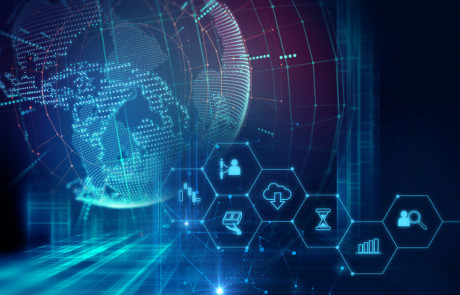Move over SaaS, PaaS and EaaS Fintech models
By Hirander Misra, Chairman of GMEX Group and SECDEX Group
I recall when I started my career at Reuters in 2006, I was given in my joining pack a Reuters dictionary of abbreviated terms and their actual meaning. I quickly realised beyond the jargon of IT phrases, there was a whole new world of financial acronyms. It’s a good job I read this from page to page – not the most exciting activity of my career! – As I would often encounter whole conversations where my bosses communicated with me in what, to ‘those not in the know’, would seem like alien jargon.
Acronyms became an obsession for a while, especially when I joined product development at agency broker Instinet. I would often brainstorm with my team the best acronyms for new products, trying to ensure the collective use of the words actually spelt something – by taking the first letter of each word. Management, some of which had a religious conviction, pushed back when we tried to name the automated connection to the London Stock Exchange – LORD (London Order Routing Destination).
It is with this in mind that I was recently asked by my external marketing agency The Realization Group to describe in one sentence only what GMEX Group did. One would think having been over 8 years since I co-founded the firm that this would be easy, however as those of you who write would know, trying to say more with less words is always a challenge albeit Twitter practice has made it somewhat easier for some.
After sleeping on it, the Eureka moment struck me and I coined a new phrase, which course needed an acronym:
“GMEX is a global market infrastructure vendor providing multi-asset trading, exchange matching engine & post trade business solutions, and Ecosystem-as-a-Service technology.”
Ecosystem-as-a-Service (EsaaS) – is a distribution model that combines the delivery of a diversity of knowledge-based Fintech services by way of interconnecting a number of participants, where each can benefit the other and be both a provider of services and a consumer of them, therefore creating a collaborative network effect.
This is very different to Software-as-a-Service (SaaS), which is a model where software is provided on a subscription basis as a hosted managed service; and Platform-as-a-Service (PaaS), which are cloud computing delivered services that provide a platform allowing customers to develop, run, and manage applications without the need to build and maintain the infrastructure associated with developing and launching an application. Or even Enterprise-as-a-Service (EaaS), which is an advanced cloud computing service model that incorporates software, infrastructure and platform offerings with additional business process management and enterprise governing service layers.
To illustrate this, by tapping into an EsaaS, such as that which GMEX provides, participants benefit from network effects in product distribution and access to customer and capital flows across an international ecosystem. This facilitates the linkage of multiple digital exchanges, digital custodians, digital banks and third party FinTech services, augmented by their own products and services across international nodes (jurisdictions), to more easily trade, clear and settle digital assets, as well as traditional assets, eradicating the age-old exchange silos.
EsaaS allows firms such as GMEX to:
- Be the glue creating interconnectedness between participants – delivering, for example, hybrid exchange and post trade ecosystems bridging the gap between traditional and digital assets, underpinned by regulatory frameworks much like interconnected telecom networks.
- Not just sell technology – but rather use a combination of Fintech, business and investment solutions empowering partnerships and ventures.
I truly believe that EsaaS is the future of Fintech, not just for GMEX by also for the wider Fintech community, superseding SaaS models, where all the onus is on clients to come up with the business model and PaaS, which ultimately leads to the Fintech platform enabling it delivering captive services primarily to benefit itself in terms of the resulting network effect.
Take Apple devices as an example – they sell for far more than many other phone devices not because the hardware is markedly different or the software is streets ahead, but because Apple sells knowledge, and knowledge when combined with an effective means to deliver it creates a need, which leads to market growth.
The future will be collaborative so that we create knowledge-based economics, and this is ultimately the ethos of the effective use of blockchain technology – the future is therefore Ecosystem-as-a-Service where those delivering services and those consuming them benefit from the network effect of each other.

